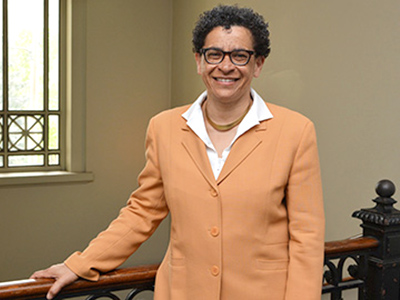HUMS 241, James Baldwin’s American Scene

Course Description:
In-depth examination of James Baldwin’s canon, tracking his work as an American artist, citizen, and witness to United States society, politics, and culture during the Cold War, the Civil Rights era, and the Black Arts Movement.
Led by:
 |
Professor Jacqueline GoldsbyMy research and teaching focus on African American and American literatures. I’m especially interested in the ways that authors and texts articulate un-archived, “secret” and so, unspeakable developments that shaped American life during the long century of Jim Crow segregation’s reign, from 1865 to 1965. For instance, my first book, A Spectacular Secret: Lynching in American Life and Literature (2006), examines how literary depictions of anti-Black mob murders at the turn of the 20th century figure the violence as a trope of American modernity. Currently, I’m completing an editorial project– a Norton Critical Edition of The Autobiography of an Ex-Colored Man—that reclaims James Weldon Johnson’s novel as an important harbinger of Afro-Anglo-American modernism. My next monograph, Birth of the Cool: African American Literary Culture of the 1940s and 1950s, focuses on the regenerative aesthetic life that Jim Crow segregation gave rise to during the mid-20th century. How to explain the aesthetic cosmopolitanism of African American literature’s “lost generation”–those fabulous, brilliant writers of the post-World War II/pre-Civil Rights Movement era? What literary ecologies made those authors’ emergence and impact as a cohort both decisive and hard to classify? I want to think these questions through in relation to a Bourdieu-informed “field theory” of Black literary production during those decades. To research Birth of the Cool I’ve had to recover the archives I want to write about. ”Mapping the Stacks” makes manuscripts, sound recordings, photographs, and moving images that document Black Chicago’s literary, cultural, and visual histories during the 1930s-1970s accessible to researchers and the public. |